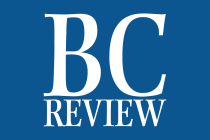Quick search unearths unclaimed funds
My son likes to peruse the Internet and he told me I had funds the state of California was holding for an utility overpayment I had made over 15 years ago. It was easy-peasy to go to the website and confirm my identification to the state and receive the money.
I then decided to check the Nevada site and, lo and behold, I had a few dollars there, too. It took more steps to ask for these funds, and I could not do it online as California allowed. Our legislators should consider copying the California model.
Having too much time on my hands, I decided to go through my contact list and search if any of my relatives or close friends also had money due. Wow, some of my relatives had over $17,000.
Interestingly, after notifying each of them, the majority did not believe my email notification thinking it was spam or a phishing attempt. I even called one friend who does not use the computer much but owns a chain of fast food outlets and he said he thought it was a scheme to get his identification. I told him it was a secure official state site but he was still leery.
It is an example of how scared people are of information received via email, yet these same people will quickly believe urban legends disseminated the same way.
How do you check whether you have money due? Use a search browser such as Google and type in: unclaimed property (add the state where you lived and you might check several). Go to that state's government website and not a service that charges a fee.
Once on the state's secure website, look for the unclaimed property search box. After finding that link, type in your name.
Start by just putting in your last name only. Look at the list and click on any that might be for you. If the list is very long, then put in the initial of your first name and again check. Finally, you can put in your full first name and check that list. Submitting in this manner will ensure you don't miss any account.
The direct link to the Nevada website is: https://nevadatreasurer.gov/upsearch. The direct California website: https://ucpi.sco.ca.gov/ucp.
Good luck. If you need more help, ask a friend who is computer savvy or email me.
— Glenn Nakadate is a Boulder City resident and can be reached at bcpebble@yahoo.com



